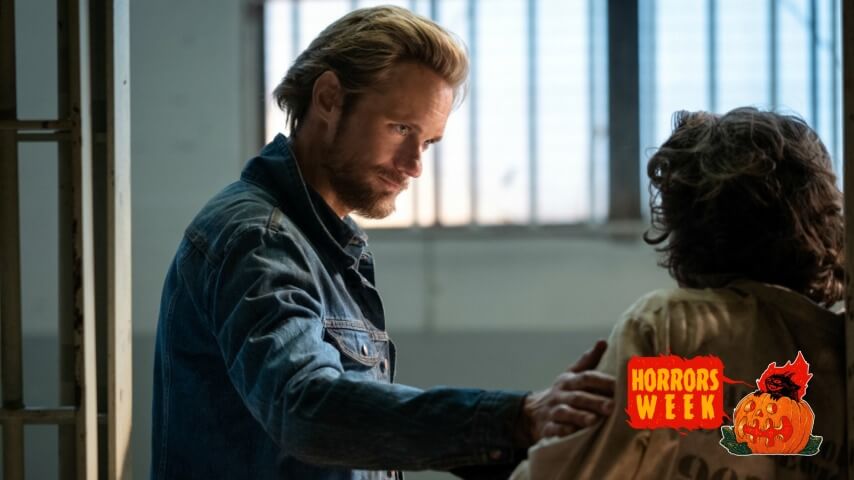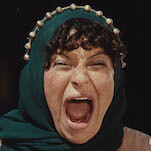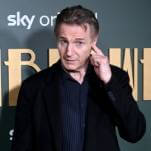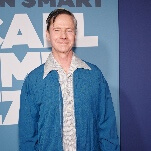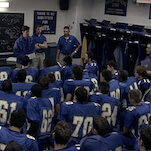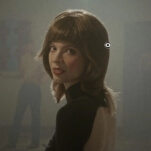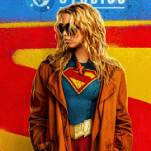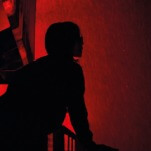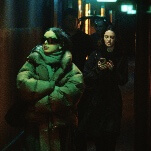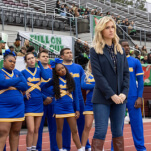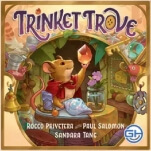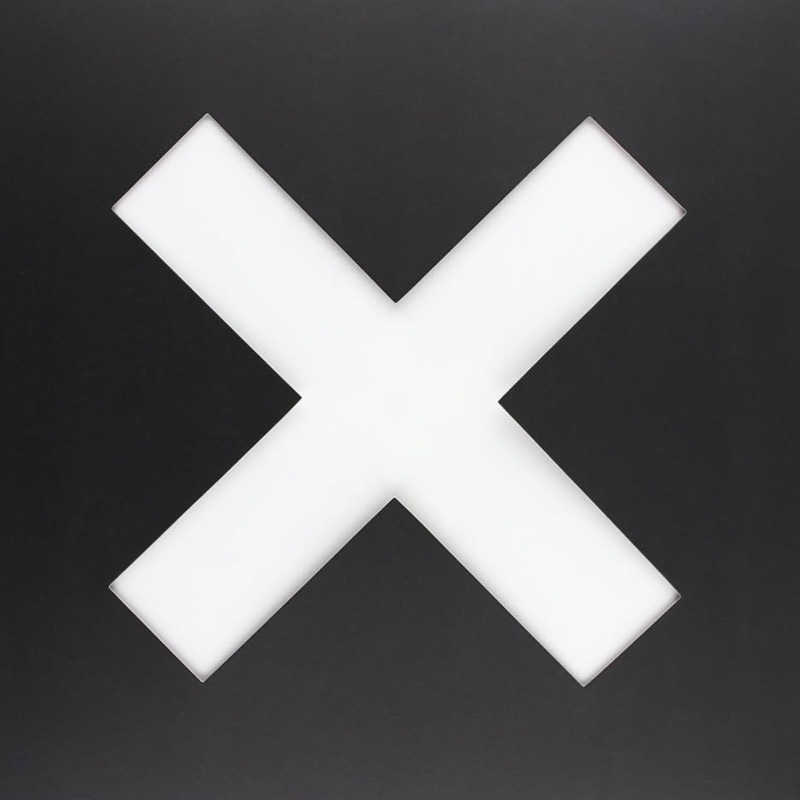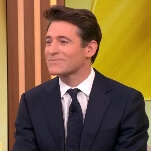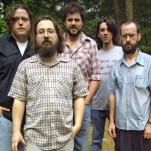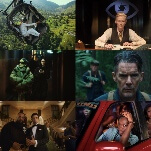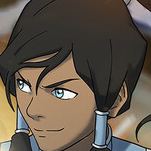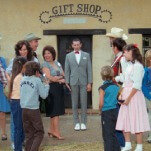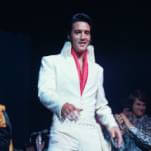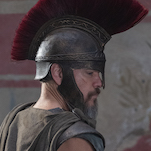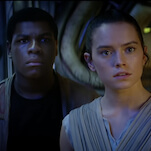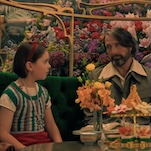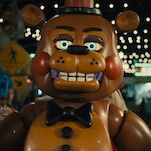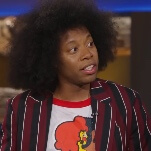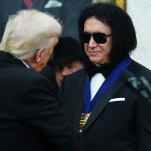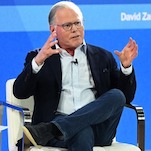I had high hopes for the 2020 miniseries adaptation of The Stand. The timing was almost too perfect—with America still struggling in the grip of a real-life pandemic, here was a Stephen King story to reassure us that things could be so much worse. The novel had been adapted for television before, but while the 1994 version has its charms, it was a fundamentally campy affair, beloved more from nostalgia than from actual quality. A modern remake, one with a bigger budget and bigger stars, could do things right.
My hopes did not last long. The 2020 miniseries has a lot of problems (flattening of “good” and “evil” characters, miscasting, a dopey “new” ending), but it makes its biggest, most obvious mistake right out of the gate. The novel’s greatest strength is its structure, telling a massive, continent-spanning narrative in a way that’s clear, immediately understandable, and expertly paced. It does so with a linear, expanding approach that starts by introducing each main character in turn even as it fills in the details of the chaotic, collapsing world around them. King’s innate gifts as a storyteller are on clear display here, and instead of trusting those gifts, the writers of this latest adaptation threw them out, opting instead for a Lost-style approach, picking up in medias res after the Captain Trips epidemic and relegating all the most exciting, society-falling-apart bits to flashback.
It would be hard to overstate how disastrous a choice this is. Even the 1994 miniseries, for all its flaws, understood how vital King’s original approach was; in discarding it, the 2020 version gives up the primary way The Stand pulls in the reader/viewer (by giving us recognizable characters and then watching as they go through hell) for a little bit of novelty and not much else. It’s such a baffling choice that, once I got over my disappointment, I had to wonder why it was made in the first place. It’s easy to dismiss the whole debacle as an unforced error by the creative team (and given how much the rest of the show is bungled, I don’t have much sympathy), but even the most talented artists would find adapting The Stand to the screen a near-insoluble challenge.
The first and most obvious pitfall is the book’s scope. The Stand has, at rough estimate, about a billion characters, and while only a dozen or so are absolutely critical to the plot, the story loses a lot of its impact if you streamline too aggressively. The novel opens with a highly contagious man-made virus that escapes a government lab and kills off 99 percent of the population of the United States. Roughly the first third of the book is about the fallout from that disaster, as social systems rapidly break down; King weaves in the struggles of individual characters with short sections that take a larger view of the crisis as a whole.
It’s a remarkably effective start to an epic story, and it features some of King’s best writing—there’s an inspired confidence to the work he does here that helps make the unimaginable feel terrifyingly, exhilaratingly real. The problem for adapting this all into another medium, just on the most practical level, is how to convey the sheer volume of chaos in visual terms. Prose has its own challenges, but “cost” isn’t among them—while King needed to edit the first edition down to save on publisher expenses, there’s a difference between trimming a couple hundred pages and filming an entire society eating itself alive.
The focus narrows in the book’s back half, centering on the heroes rebuilding their lives in Boulder, CO, while the villain, Randall Flagg, readies his people for war in Las Vegas. That’s still a lot to keep track of, though, and while adaptations often have to be liberal in what they cut, paring this section down to a bare minimum wouldn’t really solve the money problem. Boulder and Las Vegas are both fully realized locations in the book, and the contrast between the two—the former a commune striving to uphold the tenets of democracy, the latter a dictatorship held together by fear—is important to both the themes and tension of the story as a whole.
A successful adaptation would need to find artful ways to capture all of this without spending all the money in the world. You’d need to come up with innovative approaches to conveying the interiority of the characters, something that King’s third-person omniscient narrator accomplishes with ease. But then, that’s a challenge nearly every literary adaptation faces. Say you found a creative team that was both smart enough to grasp the nature of the problem and gifted enough to find new ways to solve it. They’d still be faced with another basic issue, one that’s so obvious it’s easy to overlook: time.
The Stand is a long novel. The “complete and uncut” edition is over a thousand pages, and while other King novels have hit that length, none have used it in quite the same way. There are many reasons why this particular work has been such a hit with readers (King has said that it’s the one he gets the most letters about), but the one that’s likely to be the most difficult, if not impossible, to recapture in another format is simply the time spent reading it, and the way that time enriches our investment in the characters and our belief in the persistence of the world they exist in.
No film adaptation could really capture that same feeling—the closest I can think of is the long build-up to Avengers: Endgame, and it’s hard to imagine a studio being willing to make 22 different movies about Stu Redman, Fran Goldsmith, and the rest before finally getting to the point. (The Lord Of The Rings trilogy managed a smaller version of this, but Jackson and company were helped by a text that’s full of huge battles and epic confrontations; The Stand, even with its brilliant opening third, is decidedly less fantastical.) It makes sense, then, that we’ve only seen TV adaptations of the book to this point, as television is the only other medium really capable of that kind of long-term build.
Even then, though, it’s an uphill battle simply because of the difference in how books and TV shows are structured. You’d need multiple seasons to really do the story justice, but while the novel is already organized around chapters and volumes, those distinctions are made for ease of reading and flow, not for what fits into a 10-episode (or 20-episode, if we’re dreaming) format. If, by some miracle, you were allowed that kind of creative freedom in an industry dictated by rigid forms, there’s still the problem of figuring out how to translate so much content into distinct episodes in a way that’s both coherent and emotionally satisfying.
You might be better off ignoring all but the basics of the novel (plague, Walking Dude, God[?]) and starting from scratch. Maybe that’s what the 2020 version was shooting for; it worked for Kubrick, after all. But while that solves some challenges, it requires a level of artistic presumption that few could live up to. In addition to its much smaller setting, Kubrick’s The Shining works because he had a clear artistic vision for the movie he wanted to make, and he used the plot of King’s book to serve his own ends. It’s possible to imagine a version of The Stand made with similar intent, but that opens up its own kind of risk. Maybe it pays off and you get a new classic for fans to debate and obsess over; more likely than not, since most of us are neither Kubrick or King, you’ll end up with a muddle that pleases no one.
None of this is set in stone, of course. There have been to date only two finished attempts to adapt The Stand, and while neither of them had even a tenth of the novel’s staying power, there’s no rule saying that someone couldn’t come along some day with a brilliant concept that makes all of my protests look foolish. I hope they do. But I’ll be honest with you: I don’t really care one way or the other. We already have The Stand, and there’s no version of it that will ever really improve on what reading it meant to me, and thousands like me, flaws and all. Not everything needs to be adapted—and, to borrow a phrase from another King work that’s yet to survive the transition to the screen: sometimes print is better.
